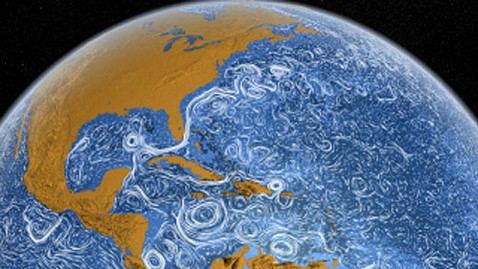'Perpetual Ocean': NASA Time-Lapse of Sea Currents

"Perpetual Ocean" shows Gulf Stream snaking around Florida and up East Coast. NASA/Goddard Space Flight Center Scientific Visualization Studio
Click on the video below and prepare to be mesmerized. It's called "Perpetual Ocean," and it was put together by NASA's Scientific Visualization Studio at the Goddard Space Flight Center in Maryland.
It was actually done about a year ago, compiling data from several satellites monitoring ocean currents from June 2005 to December 2007. But in the often-organic way that things happen online, the video has caught fire again, after NASA posted it on several websites.
"This is a computer model, a full 3-D ocean model," said Horace Mitchell, one of the lead scientists at the SVS, in a phone conversation. It combines data on sea temperature, salinity, sea-surface height and so forth, and calculates from them the ocean currents that would have flowed around the world.
If you look you can see the Gulf Stream, snaking around Florida and moving up the East Coast of the United States toward Europe. There's another, the Kuroshio Current, that passes up the Chinese coast and south of Japan. Swirling eddies stand out, looking like benign hurricanes, in the water off many coastlines.
The video is both useful and beautiful - helpful to scientists trying to make sense of masses of data, and helpful to NASA in getting people interested in what it's doing. In this case, it helps researchers understand the oceans' dynamics and the changing climate. And more than one person has remarked that the swirls remind them of Van Gogh's "Starry Night."
Take a look as well at the studio's reconstruction of the famous " Earthrise" photo from Apollo 8 in 1968, of one of changing snow cover over North America.
"A scientist is excited about his data, and that often translates into a visualization," said Mitchell. "And we want to get that out to the public."